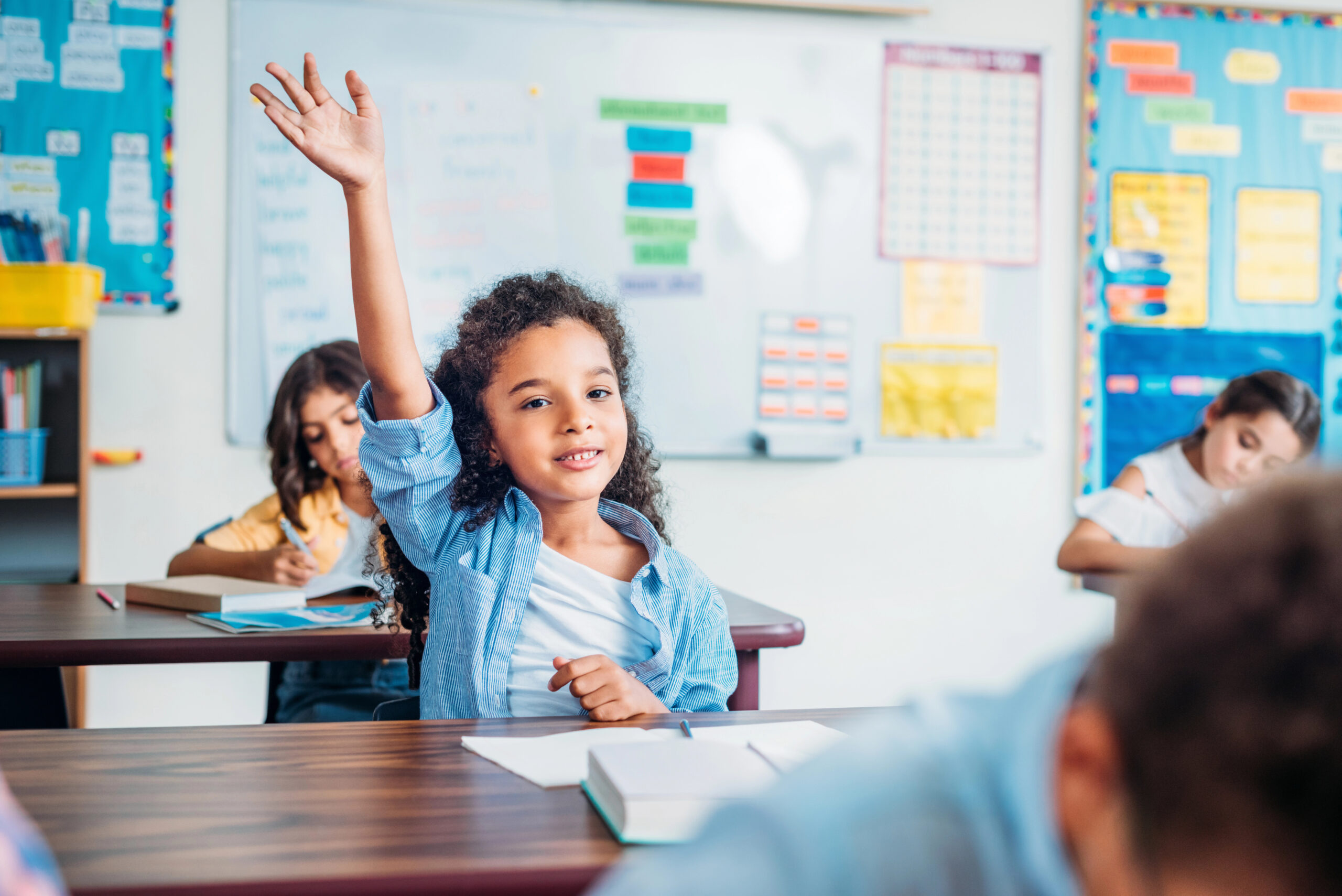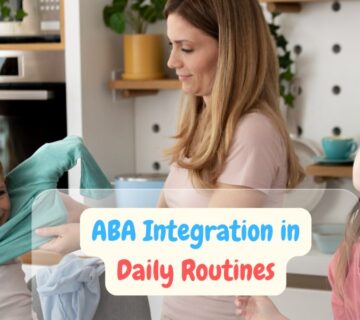Creating an inclusive classroom environment is crucial for students with autism to thrive academically and socially. Accommodations for autism play a vital role in supporting these students, allowing them to participate fully in their education and reach their potential. From sensory-friendly spaces to individualized teaching strategies, these adaptations have a significant impact on the learning experience of students with autism spectrum disorder.
Classroom accommodations for autism encompass a wide range of approaches tailored to meet the unique needs of each student. This article explores essential strategies to implement in the classroom, including structuring the environment for success, adapting instructional methods, fostering social interactions, and addressing sensory sensitivities. By understanding and applying these accommodations, educators can create a supportive atmosphere that promotes learning and growth for students with autism.
Structuring the Classroom for Success
Structuring the classroom environment is crucial for students with autism to thrive academically and socially. A well-organized and predictable setting has a significant impact on reducing anxiety and promoting effective learning. By implementing specific accommodations for autism, educators can create a supportive atmosphere that enhances student engagement and independence.
Clear visual boundaries
Establishing clear visual boundaries is essential to help students with autism understand and navigate their surroundings. Teachers can use furniture, such as bookshelves, partitions, or tables, to create distinct areas within the classroom. Colored tape on the floor or walls can also be employed to designate specific spaces for different activities. These physical cues assist students in recognizing where each area begins and ends, making it easier for them to anticipate expectations and behave appropriately in each space.
To further enhance visual boundaries, educators can incorporate labels with both words and pictures. This approach allows students, staff members, and substitutes to locate materials quickly and independently. By clearly defining personal spaces, such as using masking tape outlines on the floor, teachers can help students understand and respect individual boundaries.
Organized materials and supplies
Maintaining an organized classroom is vital for students with autism to focus on relevant information and minimize distractions. Teachers should consider removing unnecessary clutter and storing extraneous materials in cabinets, boxes, or drawers. Covering open shelves with solid-colored fabric can also help reduce visual distractions.
To promote independence and ease transitions, it’s beneficial to arrange materials and supplies in easily accessible locations. Using labeled bins or baskets for each student or group can help keep items organized and readily available. Additionally, arranging materials and data sheets in the order of student rotations can streamline activities and reduce confusion.
Predictable routines
Establishing predictable routines is essential for creating a sense of security and reducing anxiety among students with autism. Consistent daily schedules help students anticipate what comes next, allowing them to focus on learning rather than worrying about upcoming activities. Visual schedules, incorporating both words and pictures, can be displayed prominently in the classroom to guide students through their day.
To support smooth transitions between activities, teachers can implement specific routines or rituals. For example, using timers and verbal cues, such as “2 minutes, then check schedule,” can help students prepare for changes in activities. Consistency in implementing these routines across all staff members is crucial for their effectiveness.
By structuring the classroom environment with clear visual boundaries, organized materials, and predictable routines, educators can create a supportive learning space that addresses the unique needs of students with autism. These accommodations for autism not only enhance student engagement and independence but also contribute to a more positive and productive classroom experience for all.
 Adapting Instructional Strategies
Adapting Instructional Strategies
Adapting instructional strategies is crucial for supporting students with autism in the classroom. By tailoring teaching methods to their unique learning styles, educators can enhance understanding and engagement. This section explores essential accommodations for autism that focus on breaking tasks into smaller steps, providing extra time for processing, and using multisensory teaching approaches.
Breaking tasks into smaller steps
Task breakdown is a powerful strategy for supporting individuals with autism in achieving greater independence and success in various activities. This method involves dividing complex tasks into smaller, more manageable steps, which has a significant impact on reducing anxiety, increasing focus, and improving task completion rates.
To implement effective task breakdown strategies, educators can use visual supports such as charts, diagrams, and checklists. These aids help students with autism understand and remember the steps involved in a task. For example, a visual chart for brushing teeth might include pictures of each step: picking up the toothbrush, applying toothpaste, brushing, rinsing, and putting the toothbrush away.
Clear and simple instructions are essential when breaking down tasks. Teachers should use concise language to explain each step, avoiding jargon or complex vocabulary that might confuse the student. For instance, instead of saying, “Prepare for school,” break it down into steps like “Pack your backpack,” “Put on your shoes,” and “Get your lunchbox.”
Providing extra time for processing
Processing time is crucial for students with autism to hear, understand, and respond to information. Many individuals with autism require additional time to process information, which can range from a few extra seconds to several minutes or even longer in some cases.
To accommodate this need, educators should slow down and give students a chance to respond in their own time. It’s important to wait longer than what feels natural, as some students may need 30-60 seconds or more to process information. If necessary, teachers can repeat the communication 2-3 times, but it’s essential to give students the opportunity to respond at their own pace.
Using multisensory teaching approaches
Multisensory teaching techniques stimulate learning by engaging students on multiple levels. These strategies encourage students to use some or all their senses to gather information, link ideas, perceive logic, and store information for later recall. This approach is particularly effective for children with autism who may have difficulties with traditional teaching methods.
Incorporating visual, auditory, tactile, and kinesthetic elements into lessons can help students with autism better understand and retain information. For example, using books with pictures, audio books, and touch-and-feel books can be highly effective. The Easy-for-Me™ Reading Program specifically addresses the need for hands-on practice, visuals, explicit phonics instruction, and sight word recognition via visuals—all strategies critical to the learning process for children with autism.
By implementing these accommodations for autism in the classroom, educators can create a more inclusive and effective learning environment for students with autism spectrum disorder. These strategies not only support their unique learning needs but also promote greater independence and success in academic tasks.
 Supporting Social Interactions
Supporting Social Interactions
Supporting social interactions is a crucial aspect of accommodations for autism in the classroom. Teachers play a vital role in creating an environment that facilitates positive interactions between students with autism and their typically developing peers. By implementing strategies such as peer buddy systems, social skills groups, and structured social activities, educators can help students with autism develop meaningful relationships and improve their social skills.
Peer buddy systems
Peer buddy systems have a significant impact on promoting social interactions for students with autism. This approach involves pairing a student with autism with a typically developing peer who can model appropriate social behavior and provide support. To implement this strategy effectively, teachers should educate peers about autism and specific strategies for interacting with autistic students. This education increases the likelihood of frequent and positive social interactions between the students.
One effective way to implement a peer buddy system is through a rotating assignment of playground buddies for the student with autism. This approach allows the student to observe and model appropriate social behavior from different classmates throughout the year. Additionally, peer buddy programs can help bridge the gap between general education and special education classrooms by providing structured opportunities for language, play, and social skills development.
Social skills groups
Social skills groups are designed to strengthen the social interaction and communication skills of children, teens, and young adults with autism spectrum disorder (ASD). These groups, led by professionals such as speech-language pathologists, occupational therapists, and mental health practitioners, provide a safe environment for participants to practice social skills actively.
Competencies cultivated through social skills groups include positive peer relations, reciprocal play, problem-solving, life skills, and understanding and expressing emotions. These groups can be tailored to different age groups and ability levels, offering a variety of program options that appeal to diverse interests.
Structured social activities
Structured social activities provide opportunities for students with autism to practice social skills in a controlled environment. These activities can be incorporated into the classroom routine or organized as separate events. For example, creating small lunch groups with structured activities or topic boxes can help students with autism engage in social interactions in a more manageable setting.
Teachers can also use social narratives and social cartooning as tools to describe and define social rules and expectations. These visual supports can help students with autism understand and remember appropriate social behaviors in various situations.
By implementing these accommodations for autism, educators can create a supportive classroom environment that promotes social interaction and skill development for students with autism. These strategies not only benefit students with autism but also foster empathy and understanding among their typically developing peers, creating a more inclusive learning environment for all students.
 Accommodating Sensory Needs
Accommodating Sensory Needs
Accommodating sensory needs is a crucial aspect of creating a supportive learning environment for students with autism. Many individuals with autism experience sensory processing difficulties, which can significantly impact their ability to focus and engage in classroom activities. By implementing sensory-friendly strategies, educators can help students with autism feel more comfortable and ready to learn.
Sensory breaks
Sensory breaks are essential for students with autism to regulate their sensory input and maintain focus throughout the school day. These breaks provide opportunities for students to engage in activities that address their specific sensory needs. For instance, teachers can incorporate movement breaks between subject transitions, allowing students to perform exercises like jumping jacks or running in place for 2-5 minutes. These activities help students who require more movement to stay alert and focused during lessons.
To implement effective sensory breaks, educators can use visual supports to show students what’s expected and help them focus on the activity. Scheduled breaks can be integrated into the class timetable, while unscheduled breaks can be requested by the student or prompted by the teacher when necessary. It’s important to note that sensory breaks should be proactive rather than reactive, and should not be used as a reward or punishment.
Fidget tools
Fidget tools are valuable accommodations for autism that can help students increase focus and attention during classroom activities. These small, handheld objects provide tactile input and can be manipulated discreetly, allowing students to self-regulate without disrupting others. Some effective fidget tools include stress balls, stretchy snakes, and theraputty.
When selecting fidget tools, it’s essential to choose items that are quiet and non-distracting. For example, poppers have become popular due to their variety of colors and shapes, as well as their quiet nature. Teachers can also create a “fidget box” with a selection of regulatory items that students can access as needed.
Noise-canceling headphones
For many students with autism, hypersensitivity to noise can be a significant challenge in the classroom. Noise-canceling headphones can be an effective accommodation to help reduce auditory distractions and provide a sense of calm. These headphones can be particularly useful during assemblies, busy hallways, or other noisy environments.
When choosing noise-canceling headphones for students with autism, it’s important to consider factors such as comfort, adjustability, and noise reduction rating (NRR). Some headphones are specifically designed for children and offer features like padded ear cups and adjustable headbands to ensure a proper fit.
By implementing these sensory accommodations for autism, educators can create a more inclusive and supportive classroom environment. Sensory breaks, fidget tools, and noise-canceling headphones can help students with autism better regulate their sensory input, leading to improved focus, reduced anxiety, and enhanced learning experiences.
 Conclusion
Conclusion
Accommodations for autism in the classroom have a significant impact on creating an inclusive and supportive learning environment. By structuring the classroom, adapting instructional strategies, supporting social interactions, and addressing sensory needs, educators can help students with autism thrive academically and socially. These strategies not only benefit students with autism but also foster empathy and understanding among their peers, leading to a more positive classroom experience for all.
As we continue to improve our understanding of autism and refine educational approaches, it’s crucial to stay informed about the latest developments in this field. To learn more about effective strategies and resources to support students with autism, visit www.kidsclubaba.com. By working together and implementing these accommodations, we can create classrooms where all students have the opportunity to reach their full potential and succeed in their educational journey.
What accommodations are typically provided for students with autism?
Accommodations for students with autism may include modifications to the work schedule or policies, physical adjustments to the workspace, provision of specialized equipment and devices, restructuring of job tasks, alterations in supervisory methods, and offering job coaching support.
How can autism be supported within a classroom setting?
To support autistic children in the classroom, it’s beneficial to establish a consistent routine, collaborate with their parents, incorporate their interests into learning, use colorful visual aids, provide instructions visually, teach social skills, and consider alternative examination methods.
What specific needs do autistic children have in a classroom environment?
Children with autism often require instructional support that includes the use of pictures and demonstrations for better learning. It’s advisable to minimize lengthy verbal instructions and instead use visual cues and written directions. Reducing distractions and employing positive reinforcement for good behavior are also effective strategies.
Can you give an example of a 504 plan for a student with autism?
Common elements in a 504 plan for students with autism include the use of noise-canceling headphones, providing various visual supports like schedules, first-then strips, checklists, and visual models or directives, and limiting the use of language when giving directives to make them concise and clear.




